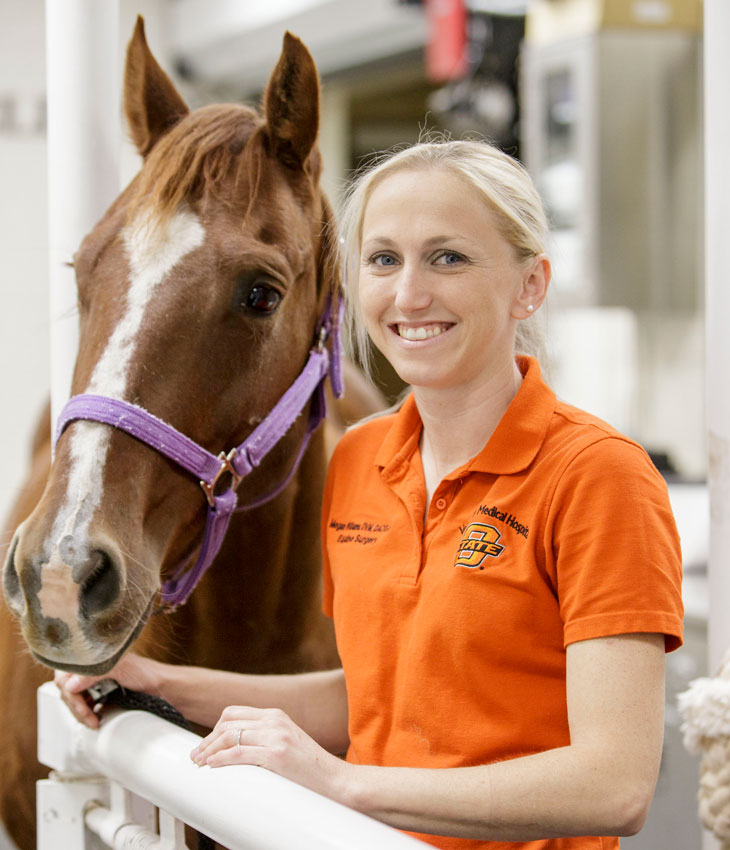
Vet Med Faces of Research: Dr. Megan Williams
Wednesday, December 1, 2021
Megan Williams, DVM, DACVS (Large Animal) is an assistant professor of equine surgery in the Veterinary Clinical Sciences Department at Oklahoma State University’s College of Veterinary Medicine. Since coming to OSU in 2017, she has been actively conducting research.
“My research predominantly focuses on equine lameness, such as novel treatments and assessing efficacy of those treatments, as well as their safety,” Williams said. “I have also done some research involving the equine suspensory ligament including injury to the ligament, reasons structurally or anatomically why certain parts of the suspensory might not heal as well or has a propensity for recurring injury. The suspensory ligament is in all four limbs running from the base of the knee or carpus in the front end and the base of the hock in the back end all the way down the back of the leg with the flexor tendons down to the ankle.
“Lameness is a huge factor in the horse industry — both backyard horses and performance horses — with a large economic impact every year. The cost of diagnosis and treatment is big for horse owners, as well as lost performance time for horses when they are laid up for injuries and even forced into early retirement. In backyard horses, lameness can eventually become a quality of life issue if the pain is so severe that the horse is having trouble getting around the pasture or doing some light work. It’s a very common problem in the horse industry affecting all different disciplines and types of horses.
“The thing that’s most exciting for me about my research is when we make some advances or discoveries that are going to hopefully advance this field. When we find some successful areas or things that might actually help beyond current conventional treatments. It’s a constantly evolving field. Practically every day there are new treatments being developed. Sometimes we can also investigate things that are used in humans or dogs, cats, or other species that we try to investigate and apply to our equine patients.
“It’s also a slowly evolving field. Any new surgical procedure, drug or treatment that we would use for lameness takes a lot of time to investigate. We have to make sure it is safe for the horse and then we try to document that it’s actually effective beyond the things that we normally have. Lots of people are working towards advancing different drugs or treatments for musculoskeletal conditions in the horse to better treat these athletes. It takes a lot of time and effort.
“A good day is when we take a look at the data that we’ve acquired and see that we actually have something significant that will hopefully lead to a valuable addition to the literature. If you are thinking about investigating equine lameness specifically, it can be kind of a daunting field because there is so much already out there and so many people looking at different treatments. By the same token, every day there are new, innovative therapies coming on to the scene that need to be investigated. Although there is a lot that’s already been done, there is still loads more to do.”
Vet Med Faces of Research is a monthly series designed to inform the public about the impact of the numerous studies being conducted at Oklahoma State University’s College of Veterinary Medicine. Advancing knowledge and understanding for the benefit of the lives and livelihoods of the people of Oklahoma is a critical element of OSU’s land-grant mission. If you would like to support research at the college, please contact Ashley Hesser, director of development with the OSU Foundation, at 405-385-0715 or ahesser@osugiving.com.
